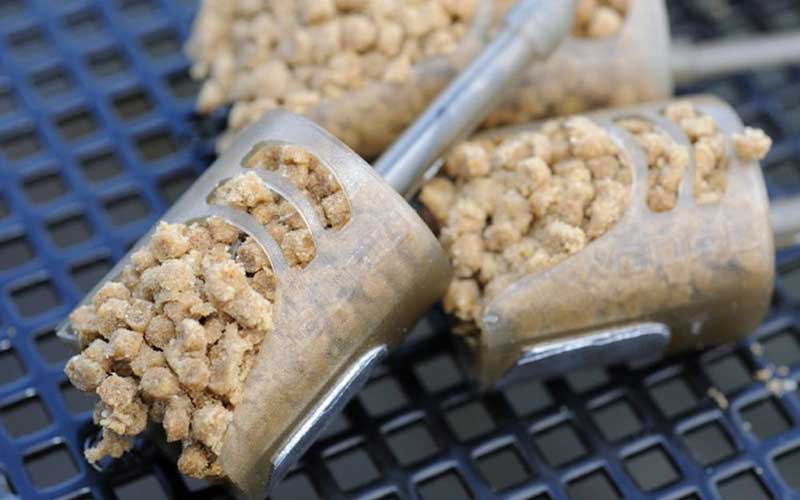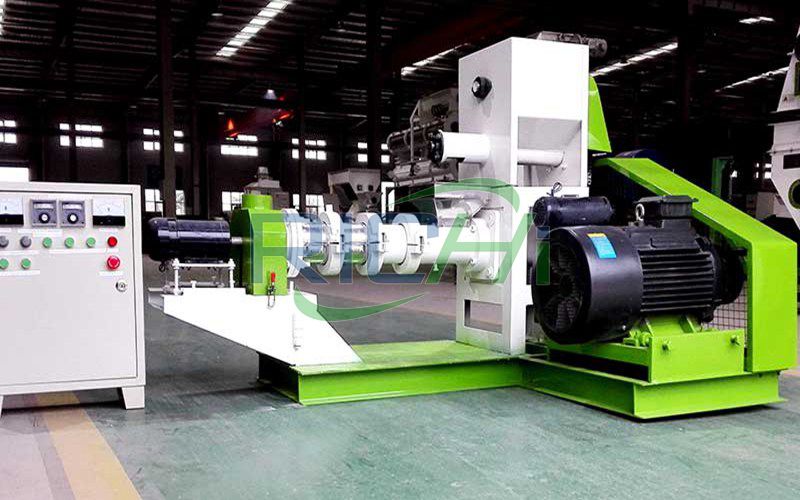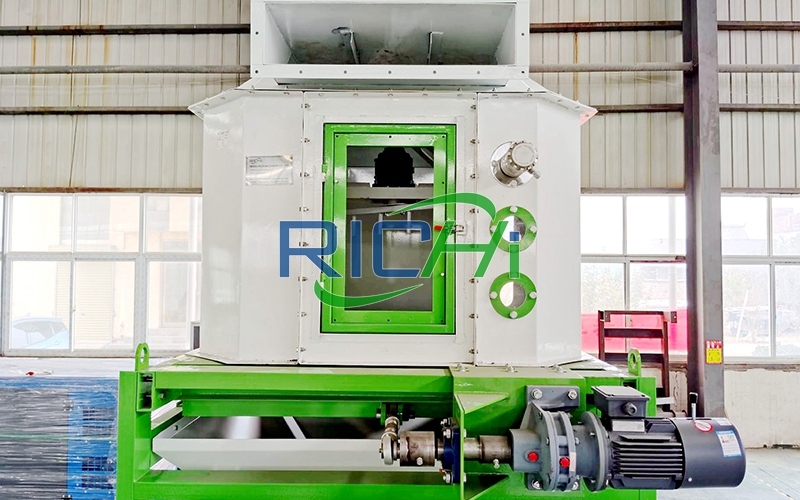
Hotline:+86 18574103366
| |KINDLY REMINDER: If you are interested in our products, Please get in contact with us
Penaeus indicus is found from the Indo-West Pacific: East and South East Africa to South China, Papua New Guinea and North AustraliProteins and amino acids. Proteins (muscles, enzymes and hormones) are central to feed formulation systems as an expensive component of feeds. Penaeus indicus protein requirements as given in various reports are 43 percent, 35 percent and 42.9 percent, 32.3 percent, 30 to 43 percent and 35 to 37.5 percent.
Shrimp require ten essential amino acids (EAA): arginine, methionine, valine, threonine, isoleucine, leucine, lysine, histidine, phenylalanine and tryptophan. Methionine, lysine and arginine are generally the first limiting amino acids when applying least-cost optimization (formulation) of commercial shrimp feed formulae.
Stimulating natural production in a pond through fertilization provides cultured shrimp with a portion of their food. Natural food organisms play a major role in the overall nutritional budget of pond-reared shrimp, even at high stocking densities. Penaeus indicus is a predator of benthic invertebrates.

Commercial Penaeus Indicus Feed Pellets
A complete feed is a formulated pellet that provides all required nutrients in the proper proportions necessary for rapid weight gain, high feed efficiency and necessary shrimp health and quality. Feed cost is about half of variable production costs in shrimp culture, so a shrimp producer should carefully consider feed selection and use.
How to make commercial penaeus indicus feed pellets? We may need to buy a shrimp feed pellet machine, shrimp feed extruder or a complete feed pellet production line equipment. This is not only for shrimp feed plants and aquatic feed plants. It is more important for large fish and shrimp farms. We know that the price of buying shrimp feed is very expensive. If we can produce shrimp feed by ourselves, the cost of feed will be greatly reduced. In addition, the shrimp feed pellets we produce can be sold to those who need it, and profit can also be realized!
There are generally two forms of raw materials used in feed mills: one is powder, which does not need to be coarsely crushed. The other is pellets, which are materials that need to be coarsely crushed. Primary coarse pulverization is the pretreatment process of ultrafine pulverization in aquatic feed processing. Its main purpose is to reduce the particle size difference and variation range of materials, improve the working condition of the ultrafine grinder, and increase the working efficiency and guarantee of the ultrafine grinder Stable product quality.
The first batch of ingredients is mainly the preparation of popular raw materials, that is, the preparation of relatively large materials in the formula. This process is mainly completed by the electronic batching scale. The first batching and mixing is also the pre-treatment process of ultra-fine pulverization, which is mainly to reduce the variation range of material particle size, improve the working condition of the pulverizer and increase the working efficiency of the pulverizer, and ensure the quality of the product.
Due to the low food intake of aquatic animals, short digestive tract, and poor digestion capacity, aquatic feed requires a very fine particle size to increase the surface area of the feed, increase the contact area between the digestive juice of aquatic animals and the feed, and increase the feed of aquatic animals. The digestibility and feed remuneration; at the same time, due to the low intake of aquatic animals, the mixing uniformity of the feed is required to be reflected in a smaller range, which also requires the aquatic feed to have a finer particle size. For example, all the shrimp feed must pass the 40-mesh analytical sieve, and the 60-mesh sieve must be less than 5%, so the micro-grinding process must be used. Various raw materials enter the secondary mixer after secondary batching. There is an artificial feeding port above the secondary mixer, which is mainly used for adding trace additives. After the material is pulverized and mixed with the secondary ingredients, it enters the subsequent process---expansion granulation process.
In the extrusion process, the material actually goes through a cooking process under high temperature, high humidity and high pressure. In this process, the physical and chemical properties of the material change strongly, and the moment the material is extruded from the die hole, because the pressure suddenly drops from high pressure to about 100kPa, the water in the feed is immediately transformed from liquid to gas and is emitted from the feed. So that the material is expanded to form the so-called expanded feed. Because this feed not only has the advantages of general hard pellet feed: good palatability, avoids automatic classification of products, is convenient for transportation, helps digestion, reduces waste in the feeding process, etc., but also has unique advantages: starch in the feed The gelatinization degree is high, the protein is easier to digest, and the utilization rate of the animal's feed is improved; it has excellent floatability, which is convenient for observing the feeding situation of fish and can control water pollution to the greatest extent. These are also the main reasons why extruded feed is widely used.

Shrimp Feed Pellet Extruder
After the material is extruded by the extruder, it will form squishy particles (with a moisture content of 25% to 30%). At this time, it is best to use pneumatic conveying instead of using a hoist to lift. Due to the high moisture content of the material conveyed by pneumatic force, it must be dried in the dryer to reduce the moisture of the material to about 13%. After the materials are dried, they enter the external spraying system. The external spraying of particles is mainly to meet the energy requirements of fish and reduce the loss of heat-sensitive substances during processing. Nutrients that should not be added in the previous process can be supplemented by spraying, and at the same time it can improve the palatability of the feed and reduce the powder content. The best working temperature for this process is around 80°C. After the material passes through the external spraying system, it can enter the countercurrent cooler for cooling.

Cooler
The cooled material is lifted by a hoist and then crushed into the plane rotary screen for classification. The grading sieve is generally a two-layer sieve, and the material on the lower sieve is the finished product, which can be directly entered into the finished product warehouse, and then weighed and packaged.
Dietary lipids are a highly digestible and concentrated source of energy that supplies 8 to 9 kcal/g, about double of that supplied by either carbohydrate or protein . Energy requirements reported for P. indicus at 350 to 400 kcal/100 g are higher than for species like Penaeus monodon.
A dietary source of cholesterol is essential for optimal survival and growth. In crustaceans, cholesterol is nutritionally superior to other sterols. Raw material ingredients such as fish, shrimp, squid and crab meals contain cholesterol and can provide a portion of the requirement for cholesterol in shrimp feeds. The cholesterol levels recommended for P. indicus range from 0.2 to 0.5 percent.
Phospholipids (lecithin) have a growth-promoting effect in shrimp. Soya beans are the most commercially important source of lecithin for shrimp diets.
Soybean lecithin as a phospholipid source also adds choline, inositol and phosphorus to the diet. At 1.5 percent lecithin fortification in the diet, 570 g/tonne of inositol and 540 g/tonne of choline is provided. Akiyama, Dominy and Lawrence advised the supplementation of choline at 400 mg/kg feed and inositol at 300 mg/kg feed. Dietary inclusion in shrimp feeds is at 0.5 to 2 percent.
Most aquatic animals have an optimal dietary carbohydrate range of 20 to 40 percent. In general, shrimp utilize complex starches like cornstarch better than glucose. Standard wheat starch is generally the starch source used in shrimp feeds. Carbohydrates reduce (“spare”) the use of protein, allowing a lower optimal protein level. Advised carbohydrate levels in P. indicus feeds are given in Tables 2a and 12.
Fish and shrimp feeds can be produced with 12 to 13 percent moisture, but to contend with free water migration problems to the sealed edges of feed bags causing spoilage, feed producers have opted for lower levels ranging from 9 to 10 percent. This ensures pellet stability and quality during storage, but also adds drying costs and losses caused by “shrinkage”.
The addition of shell waste, chitin or glucosamine to shrimp feeds is beneficial to growth. Dietary chitin, supplemented at 5 percent, enhanced growth, while fermented prawn shell waste was beneficial to the growth of Penaeus indicus.
Crude fibre is practically indigestible for crustaceans. Raw materials high in crude fibre create grinding problems and reduce the binding capacity and water stability of the pellets. The pellet water durability (stability) should last for at least two hours when the feed is immersed in water. Crude fibre levels in commercial feed should be less than 4.0 percent.
The “ash content” is a measure of the total amount of minerals present within a food and should be minimized. The “mineral content” reflects specific elements in the diet. Shrimp can assimilate some of their minerals directly from the water. The mineral requirements of shrimp have not been fully established. Shrimp can absorb calcium and phosphorus from the seawater. Macronutrients for shrimp nutrition are Ca, P, Mg, K, Cl, S and Na, while the micronutrients are Fe, Zn, Cu, Mn, Ni, Co, Mo, Se, Cr, I, Fl, Sn, Si, Va, As (CIBA, 2002). Seven minerals (calcium, copper, magnesium, phosphorus, potassium, selenium and zinc) have been recommended for inclusion in penaeid shrimp diets.
Phosphorus is the most expensive mineral supplement in aquatic feeds. As dietary inclusion levels increase, utilization is usually reduced and unconsumed phosphorus leads to nutrient loading of culture systems and aquaculture effluents. When substituting fishmeal with soybean or other plant meals, poor availability of phosphorus from feed grains is a problem. A high percentage of the phosphorus in feed grains is bound to phytic acid. Phytate is an antinutritional factor, as it reduces mineral and amino acid availability in feeds.
Ahamad Ali advised a Ca:P ratio for P. indicus of 1:1.98, with Ca at 0.53 percent and P at 1.05 percent of the diet. This is in agreement with research on other species showing that Ca should be minimized to improve phosphorus availability and that phosphorus is a necessary dietary supplement.
Ca can likely be absorbed from the seawater, so supplementation may not be necessary. Different phosphate sources have different availabilities. Calcium levels in excess of 2.3 percent should be avoided.
Davis, Lawrence and Gatlin found that the individual deletion of Mg, Mn, Fe, Zn and Cu from the mineral premix resulted in reduced tissue levels of these minerals in P. vannamei. Seawater likely contains sufficient sodium and chloride to satisfy the physiological needs of shrimp, but potassium, zinc copper, iodine and manganesere needed as supplements in the diet. Iron supplementation to commercial shrimp feeds is not necessarily needed. A lack of magnesium causes decreased growth, poor survival and reduced feed efficiency in shrimp, but oceanic seawater has high magnesium levels (1 350 mg/l), and plant ingredients are high in magnesium so shrimp may not require a supplemental dietary source of magnesium. A dietary requirement for selenium is likely. However, with its potentially toxic effects, the level should be less than 0.3 mg/kg.
Fifteen compounds are typically considered vitamins. Of these, thiamine, riboflavin, niacin, vitamin B6, pantothenate, folate, vitamin BI2, biotin, choline, myoinositol (inositol) and vitamin C (ascorbic acid) are water-soluble. Vitamins A, D, E and K are fat-soluble. Ahamad Ali has established some of the vitamin requirements of P. indicus. A study of Penaeus monodon found that diets deficient in ascorbic acid, biotin, folic acid, niacin, thiamine and a–tocopherol resulted in poor appetite and poorer feed conversion efficiency. A lack of specific vitamins can cause histopathological changes in shrimp digestive gland cells and possible poor appetite and poorer feed conversion efficiency. Over–fortification of some vitamins (e.g. riboflavin, niacin and vitamin B6) can result in reduced shrimp growth. Vitamin premixes can account for as much as 15 percent of total feed ingredient cost, so the inclusion of excessive vitamins should be avoided.
Moss, Forster and Tacon found that microbes in pond water could substantially reduce vitamin levels required in shrimp feeds, resulting in reduced feed costs without compromising shrimp growth, survival or FCR.
Vitamin C is essential in shrimp diets for good growth and survival. When using stable forms of vitamin C such as ascorbyl polyphosphate, doses of 100 to 500 ppm are sufficient for maximal survival and growth. L–Ascorbyl–2–Polyphosphate (AsPP) is available commercially as ROVIMIX® STAY–C® 35. This product has 35 percent ascorbic acid activity, so the recommended vitamin supplementation (inclusion) at 250 to 500 g/tonne feed (mg/kg feed) requires 715 to 1 430 g/tonne.
Although not widely discussed, paraaminobenzoic acid is included in some research and commercial vitamin mixes.
Penaeids, as all animals, are unable to synthesize carotenoids de novo. Astaxanthin is the predominant carotenoid in penaeids. β-Carotene, echinenone and canthaxanthin are other pigments found in shrimp. Astaxanthin improves colouration, enhances biological functions and improves survival, growth and stress resistance in penaeid shrimp. Natural carotenoids such as dried Spirulina and carotenoid extracted from Dunaliella are potentially cheaper than synthetic products such as astaxanthin and beta–carotene. Carotenoids from other products include astaxanthin from yeast, marigold meal, paprika and Haematococcus algae. Haematococcus has about 1.5 to 3.0 percent astaxanthin by dry weight. A “finisher diet” should include 50 to 100 mg/kg of astaxanthin.
Apparent crude protein digestibility (ACPD) for shrimp is high (over 80 percent), but more research is required. Digestibility data are therefore not easily applied to practical feed formulations at present.